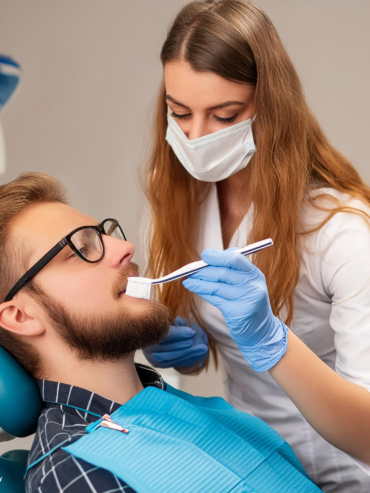What a Dental Cleaning Involves

Overview of Dental Cleanings
The plaque and tarter that builds up over time isn’t removed from the teeth by routine brushing and flossing. These substances can eventually cause oral problems that get very expensive to fix. The best way to maintain your oral health is to get regularly scheduled dental cleanings, which involve several steps. It is also important to know that each dental office might use their own methods to perform the initial evaluation as well as the work.
What is Involved in a Dental Cleaning?
The first part of the dental cleaning will involve an intake form with a medical history as well as an evaluation of the teeth and gums. This can include manual procedures as well as x-rays, which are usually taken right in the office. The visual inspection includes checking for signs of inflammation or cavities. If the dental hygienist sees any serious problems, the dentist might be consulted before the dental cleaning can proceed.
After the visual examination, the patient might need to obtain digital x-rays, which can reveal deeper issues that only appear on the superficial level as symptoms. This can reveal advance tooth decay, cavities, tumors, gum diseases, excessive tooth mobility, bone loss and other oral anomalies. The dentist will usually require new patients to get these x-rays in order to create a comprehensive treatment plan.
During the Dental Cleaning
The dental cleaning is performed by a dental hygienist who will use a variety of tools as well as a mirror to navigate the areas inside the patient’s mouth. This includes using a metal scaler to scrape the areas around the gum line to remove the built-up plaque and tarter. The hygienist may also finish off the cleaning by using a high-powered electric toothbrush that makes an unpleasant grinding noise.
These are professional tools and skills that provide a deep level of cleaning. An ultrasonic vibrating tool might be used to remove residual tarter that was scraped when using the scaler. After the cleaning is completed, the hygienist might provide patient education that includes methods for brushing and flossing the teeth in order to prevent tarter and plaque build-up in the future.
Following the Treatment Plan
Each treatment plan is customized to meet the unique needs of the patient. Many of these plans will involve multiple visits, so it is important to keep all of the appointments. The process often begins with the dental cleaning as a preliminary step. Additional appointment will address other issues that get discovered during the process. The dental cleaning is a preparatory step for future work, but it is also a key for maintaining the patient’s oral hygiene.
Schedule an appointment today at South Bay Dentistry & Orthodontics

